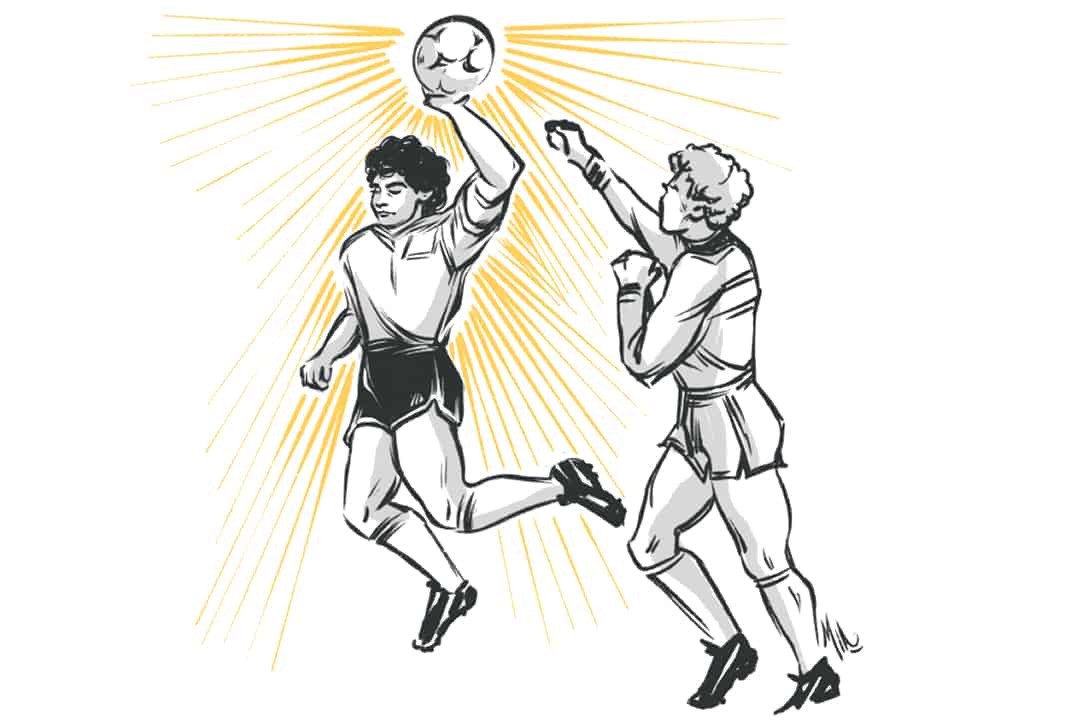Bangladesh, where I’m from, is a cricketing country when it comes to competing in world sport competitions. But Bangladesh still has a special, even unreal kind of passion for soccer.
When it comes to the FIFA World Cup every four years, I am told that a typical Bangladeshi household picks one of two teams to support: Argentina or Brazil. This vicarious experience of the South American rivalry manifests in Bangladeshi streets, which are covered in flags and banners of the two countries.
I grew up as an Argentina fan. My first serious exposure was the 2006 World Cup. Lionel Messi was only a 19-year-old star, emerging on the international scene at that time; instead, my admiration revolved around key players like Juan Román Riquelme, Esteban Cambiasso, Maxi Rodríguez, and Hernán Crespo. Argentina had a solid team, and they should have won the whole tournament — but that rant is for another day.
In the years following that tournament, my support for Argentina continued to grow. I even bought knockoff jerseys that came out of the ready-made garments industry back home. I remember a player’s name being misspelled on the back of one.
But I didn’t care. As a kid here in Canada, I boasted those striped Albiceleste colours — white and sky blue — as if Argentina was my own country, just as people on the streets of Bangladesh do when the World Cup comes around.
How is it that these colours could have so much life and meaning in a country like Bangladesh, on the other side of the world from Argentina? What brings about this strange Global South connection? Well, it probably comes down to Diego Maradona.
Maradona was regarded as the sport’s best player in history, and his recent passing caused an unparalleled outpouring of grief and love around the world, which affected me more than I would have expected.
After all, I did not have any direct memory of Maradona from his playing days. I only knew him from watching awkwardly-edited, circa 2007 soccer videos on YouTube as a kid, from his disastrous, yet entertaining tenure as Argentina’s coach during the 2010 World Cup, or from his own prophecy that Messi was to be the next Maradona and lead Argentina to glory once again.
Perhaps what stung about his death was the reality of the prophecy — a reminder that Maradona’s sensational 1986 World Cup run has yet to be repeated, that Argentina fans are still left yearning after over three decades.
Sports introduced to the rest of the world by an imperialist country like England — like cricket and soccer — play a special role in formerly colonized countries. They become an opportunity to beat the colonizer at their own game.
That is why, commentators will tell you, Argentina’s 1986 victory was so significant. Argentina exacted revenge on England — a colonial influence that had recently defeated Argentina in war — in the 1986 World Cup quarterfinals with Maradona’s infamous ‘hand of God’ goal and, four minutes later, his scoring of the ‘Goal of the Century.’
For the people of Argentina, winning the World Cup lifted spirits at a time of national turbulence, crisis, and suffering. It also elevated Maradona — a small man of impoverished, working-class beginnings — to a divine figure in his country and, at the same time, earned him affection around the world.
This affection came from those in my parents’ generation, who would come to embrace white and sky blue. And it was more than just his victory on the pitch that earned him devotion.
Maradona was outspoken about his affection for the Global South and its struggle to determine its own path on the world stage, just as Argentina had symbolically done in that quarterfinal against England. He was active and vocal in his support for the peoples of Cuba, Venezuela, and Palestine, among others. Calling himself the “voice of the voiceless,” he railed against economic injustice and imperialism.
Of course, there are other, less glorious angles to consider about Maradona. Some will condemn him as a cheater and never forgive him for the controversial ‘hand of God’ goal. Others will point to the scandalous years of substance use disorder that ultimately ended his career. There are also accusations of domestic violence levelled against him, which should be taken seriously.
Recognizing these aspects of Maradona’s life serves to remind us that heroes — even ones who are revered — are human beings, and their legacies can be complex, multidimensional, and even contradictory. The story of any life should be told in full, not white-washed.
While Maradona’s superstardom had toxic and destructive implications, it also leaves a legacy beyond his sport — beyond Argentina. He nurtured a passion for the sport, thousands of miles away, that I ultimately inherited despite never really experiencing the magic myself.
Today, Argentina continues to suffer from economic crises, and the Argentine Football Association has been riddled with criticism of corruption and mismanagement in recent years. Argentina fans are still left waiting after so many years — still looking to the game as an escape into glory, as they did in the 1980s.
The highly anticipated generation of Messi, Sergio Agüero, and Ángel Di María has failed to win a single Copa América, let alone a World Cup, despite coming heartbreakingly close so many times. They may have one last shot to come out of the shadow of 1986 in the next couple of years.
But for me, that doesn’t really affect what the stripes of sky blue and white mean to me. Even if they keep losing for another 14 years, long after Messi is gone, I’ll probably still be boasting a knockoff Argentina jersey made back home. And it all goes back to Maradona.


